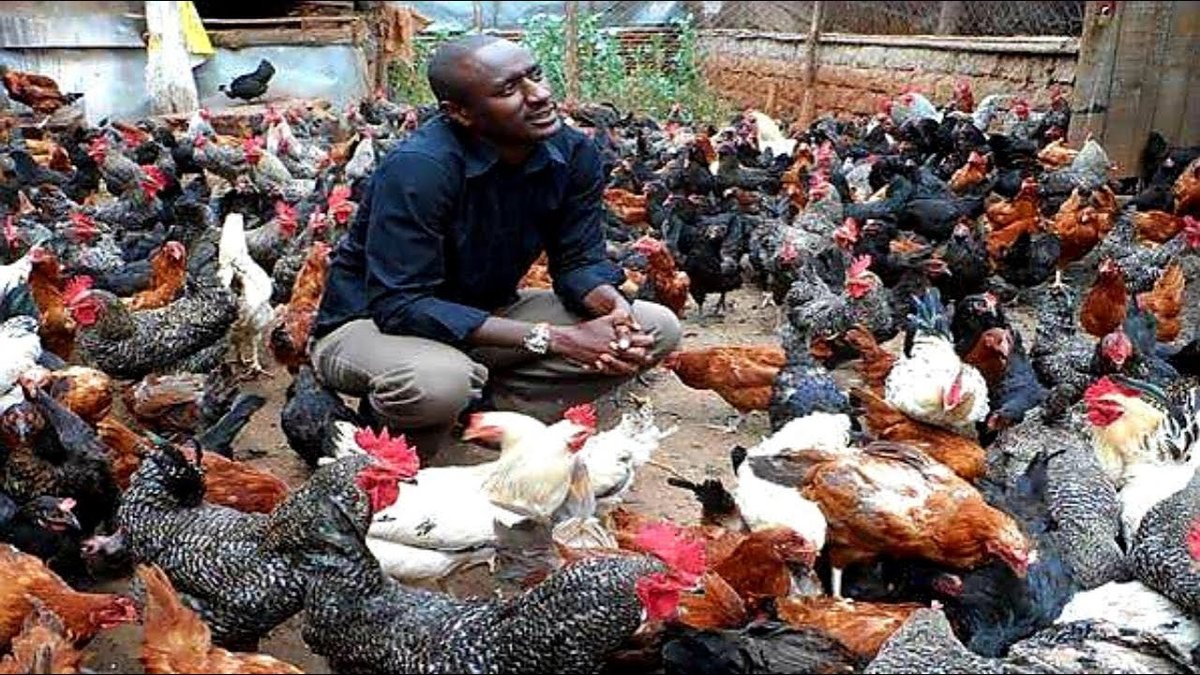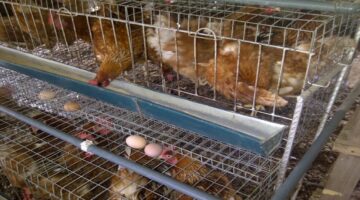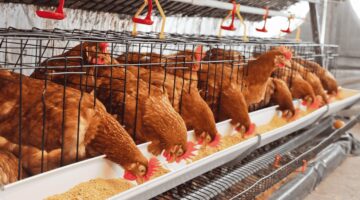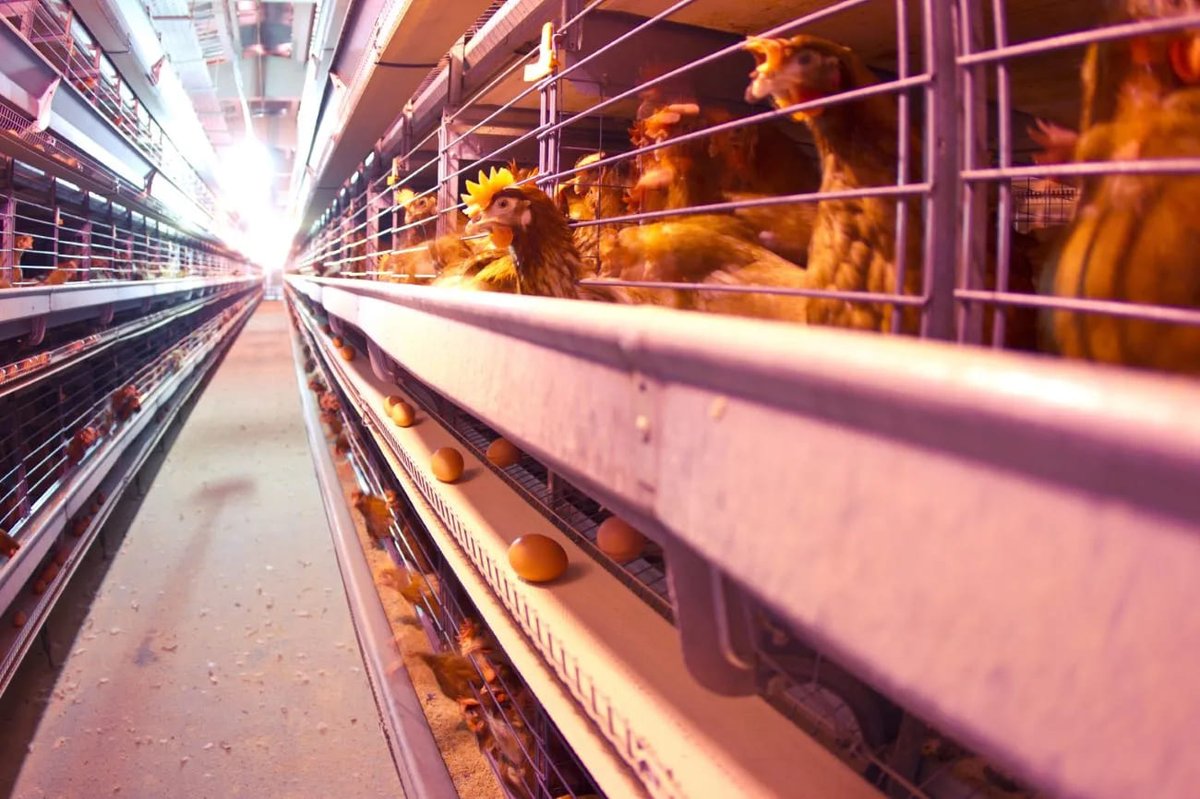Nigeria’s poultry industry is experiencing unprecedented growth, with the country consuming approximately 1.5 million metric tons of chicken meat annually. This massive demand, coupled with a population of over 220 million people, creates an extraordinary opportunity for aspiring poultry farmers. The industry contributes about 25% to Nigeria’s agricultural GDP, with an annual turnover exceeding $4.2 billion. This guide is your roadmap to building a profitable and sustainable poultry farming business in Nigeria.
Part 1: The Foundation – Your Step-by-Step Guide to Getting Started on Profitable Poultry Business in Nigeria
This section walks you through the essential steps of launching your poultry farm, from initial market research to setting up your first flock.
Understanding Poultry Farming in Nigeria
To begin your journey, it’s essential to grasp the current market dynamics, key drivers, and the significant opportunities that exist within the Nigerian poultry sector.
Current Market Statistics and Opportunities
While per capita poultry consumption in Nigeria is currently declining from 0.93 kg in 2024 to an estimated 0.83 kg in 2028, the country’s rapidly growing population of over 220 million ensures that total market demand continues to expand. Despite producing only approximately 454,000 metric tons domestically, Nigeria’s poultry sector meets less than one-third of the 1.5 million metric tons consumed annually. This creates a supply gap of over 1 million metric tons, with a significant portion of the demand met by smuggled products. This supply-demand gap means there’s room for thousands of new farmers to enter the market profitably.
Nigeria vs. Other African Markets To fully appreciate the growth potential, it’s important to compare Nigeria to other African leaders in the poultry sector. Egypt leads Africa with an annual production of 2.6 million metric tons, while South Africa boasts a high per capita consumption of 37 kg, significantly more than Nigeria’s sub-1 kg consumption. This data positions Nigeria as a market with a massive, untapped demand, making it an ideal environment for new entrants.
What makes 2025 particularly attractive for starting poultry farm Nigeria ventures? The government has rolled out multiple support programs, including enhanced funding through NIRSAL and the Anchor Borrowers’ Programme. Additionally, improved breeds like Noilers and advanced farming techniques are making poultry farming more accessible to beginners.
Why Poultry Farming Works in Nigeria
The success of poultry farming stems from several factors:
- Quick returns: Broilers mature in just 6-8 weeks.
- Consistent demand: Chicken and eggs are dietary staples.
- Scalability: Start small with 100 birds and grow gradually.
- Festival seasons: Christmas, Sallah, and Easter drive premium prices.
- Urban migration: a growing middle class increases protein consumption.
Insights from the Field: Quotes from Successful Farmers
To truly understand the keys to success, we’ve gathered insights from experienced Nigerian poultry farmers who have built profitable and sustainable businesses.
- On Starting Small: “I started my poultry farm with just 50 birds, and now I own over 39,000 birds. The key is to be consistent and not be afraid to start small. A small beginning with a great vision provides a strong foundation.”
- On Overcoming Challenges: “A major challenge for me as an entrepreneur has been finance. But my business success totally changed my self-belief. I am now confident that with the right information, the right tools, and the right network, I can survive any business challenges.”
- On Self-Reliance: “You don’t need to depend on the government to make a profit. We started our farm as students, and you can do the same. With a strong will and determination, you can make a profitable business from nothing.”
Choosing Your Poultry Niche
The first step to building a profitable poultry business is selecting a niche that aligns with your goals. This section compares different poultry types to help you make an informed decision.
Comprehensive Comparison of Poultry Types
| Type | Maturity Period | Investment/500 Birds | Market Price | Best For |
|---|---|---|---|---|
| Broilers | 6-8 weeks | ₦2-2.5 million | ₦5,000-6,000/bird | Quick returns |
| Layers | 18-20 weeks to lay | ₦3-3.5 million | ₦50-80/crate of eggs | Steady income |
| Noilers | 10-12 weeks | ₦1.8-2.2 million | ₦4,000-5,000/bird | Disease resistance |
| Cockerels | 20-24 weeks | ₦2.5-3 million | ₦6,000-8,000/bird | Festival markets |
Best Breeds for Nigerian Climate
For those starting small, choosing a breed that is hardier and more forgiving is crucial. Consider some of the easiest chicken breeds for beginners, as they are less prone to issues and easier to manage.
For Broiler Farming Business Nigeria:
- Cobb 500: Fastest growth rate, reaching 2-2.5kg in 5-6 weeks.
- Ross 308: Excellent breast meat yield, widely available.
- Arbor Acres: High survivability, uniform size.
- Marshall: Specifically bred for African heat tolerance.
For Layer Farming Business Nigeria:
- ISA Brown: Lays 320-330 eggs annually.
- Hy-Line Brown: 310-325 eggs yearly with low mortality.
- Lohmann Brown: 290-310 eggs per year, heat-tolerant.
- Bovan Nera Black: Excellent for Nigerian climate.
Capital Requirements and Cost Breakdown
Understanding the financial aspects of your business is crucial. This section provides a detailed breakdown of the costs involved in starting a poultry farm in Nigeria. For a more precise estimate of your ongoing expenses, especially as feed prices fluctuate, we recommend you use our chicken feed calculator to estimate ongoing costs based on the size of your flock.
Detailed Cost of Starting Poultry Farm in Nigeria
Understanding the poultry farm startup cost Nigeria requires breaking down each component:
| Scale | Number of Birds | Total Investment | Expected ROI Period |
|---|---|---|---|
| Small Scale | 100-200 | ₦400,000-800,000 | 8-10 weeks |
| Medium Scale | 500 | ₦2-3 million | 6-8 weeks |
| Large Scale | 1000+ | ₦5-10 million | 6 weeks |
Breakdown for 500-Bird Broiler Farm Initial Setup Costs:
- Land acquisition: ₦500,000-₦2,000,000
- Housing construction: ₦700,000-₦1,500,000
- Day-old chicks: ₦750,000-₦1,200,000 (₦1,500-₦2,500 per chick)
- Equipment (feeders, drinkers): ₦200,000-₦400,000
Operational Costs:
- Feed (100 bags): ₦2,000,000-₦2,250,000
- Vaccination/medication: ₦150,000-₦250,000
- Labor (2 workers, 3 months): ₦120,000-₦180,000
- Miscellaneous: ₦50,000-₦100,000
First-Year Profitability Tracker: 500-Bird Broiler Farm
This monthly tracker provides a realistic view of cash flow for a 500-bird broiler farm, operating four cycles in the first year.
| Month | Expenses (Recurring) | Revenue (End of Cycle) | Net Profit/Loss (Cumulative) | Notes |
|---|---|---|---|---|
| 1 | ₦2,500,000 (Initial Setup + Operational) | ₦0 | -₦2,500,000 | Initial setup, chicks, first feed |
| 2 | ₦0 | ₦2,750,000 | ₦250,000 | First cycle harvest |
| 3 | ₦2,500,000 | ₦0 | -₦2,250,000 | Preparation for second cycle |
| 4 | ₦0 | ₦2,750,000 | ₦500,000 | Second cycle harvest |
| 5 | ₦2,500,000 | ₦0 | -₦2,000,000 | Preparation for third cycle |
| 6 | ₦0 | ₦2,750,000 | ₦750,000 | Third cycle harvest |
| 7 | ₦2,500,000 | ₦0 | -₦1,750,000 | Preparation for fourth cycle |
| 8 | ₦0 | ₦2,750,000 | ₦1,000,000 | Fourth cycle harvest |
| 9 | ₦0 | ₦0 | ₦1,000,000 | Post-harvest, rest period |
| 10 | ₦0 | ₦0 | ₦1,000,000 | Post-harvest, rest period |
| 11 | ₦0 | ₦0 | ₦1,000,000 | Post-harvest, rest period |
| 12 | ₦0 | ₦0 | ₦1,000,000 | Post-harvest, rest period |
| Year 1 Totals: | ₦10,000,000 | ₦11,000,000 | ₦1,000,000 | Total profit from 4 cycles |
Note: This projection is an approximation and does not account for one-time land acquisition costs. Your actual results may vary based on market prices, mortality rate, and operational efficiency.
Regional Price Comparison: Inputs and Outputs
Input and output prices for poultry farming can differ across Nigeria due to logistics and regional demand. This chart provides a general guideline to help you plan your budget.
| Item | Lagos (South-West) | Abuja (North-Central) | Kano (North-West) |
|---|---|---|---|
| Day-Old Chicks (per bird) | ₦1,800 – ₦2,500 | ₦1,600 – ₦2,200 | ₦1,500 – ₦2,000 |
| Broiler Finisher Feed (50kg bag) | ₦20,000 – ₦25,000 | ₦19,000 – ₦23,000 | ₦18,000 – ₦22,000 |
| Crate of Eggs | ₦5,800 – ₦6,500 | ₦5,500 – ₦6,200 | ₦5,200 – ₦5,900 |
| Matured Broiler (live) | ₦5,500 – ₦6,500 | ₦5,000 – ₦6,000 | ₦4,500 – ₦5,500 |
Note: Prices are highly volatile and subject to market forces. This chart provides a general guideline.
Step-by-Step Farm Setup Guide
Embarking on a poultry business requires careful and deliberate action. This section provides a comprehensive guide, from initial research to farm setup, ensuring a solid foundation for your profitable venture in poultry farming.
Step 1: Market Research and Location Selection
This is the most critical first step, as it will determine the viability and profitability of your entire operation. A thorough market feasibility study is non-negotiable. Before you invest a single Naira, you need a solid strategy. The first step is to create a comprehensive poultry farming business plan for Nigeria that outlines your costs, revenue projections, and operational strategy.
- Conducting a Feasibility Study This involves understanding your local market, including the competition, demand for your chosen product (broilers, layers), and local pricing. The data you collect here will directly inform your business plan.
- Choosing the Right Location Your farm’s location is a long-term decision that impacts operational efficiency and logistics. For those considering poultry farming Ogun State 2025, its strategic proximity to Lagos State offers significant advantages, including a massive urban consumer market and better access to major transportation routes.
Step 2: Business Registration (CAC Requirements)
Registering your business is a crucial step for legitimacy and to access formal support.
- Why Register? A registered business name builds trust with customers and suppliers, provides access to formal financial support like bank loans, and offers legal protection for your business name.
- The CAC Registration Process The process of registering with the Corporate Affairs Commission (CAC) is now largely digital. You can complete the entire process online by searching for your desired name, filling out the required forms, and submitting your application on the CAC portal.
Step 3: Land Acquisition and Preparation
Securing the right piece of land is essential for scalability and farm management.
- Key Factors for Land Acquisition Consider not only the size of the plot but also its proximity to a stable water source and an electrical grid. The soil type should be well-drained to prevent mud and the buildup of pathogens.
- Preparing the Site First, clear the land of all vegetation and debris. Then, level the ground to create a stable foundation for your housing. Finally, fence the entire perimeter to protect your investment and deter predators.
Step 4: Poultry Housing Requirements
The housing system you choose will be a major determinant of your efficiency and profitability. When designing your housing, determining how big your chicken coop should be is the first step to prevent overcrowding. For security, predator-proofing your coop is non-negotiable in Nigeria, where threats range from snakes to human thieves. A specific and common problem is learning how to keep rats out of the chicken coop, as they can steal feed and spread disease.
- Deep Litter System vs. Battery Cage System You’ll choose between two main systems. The Deep Litter System has a lower startup cost and allows birds natural behaviors, but carries a higher risk of disease if not managed meticulously. The Battery Cage System is more expensive upfront but offers better hygiene, easier egg collection, and higher bird density, making it common for large-scale layer operations. For a detailed comparison, check out this guide on broiler vs layer farming.
- Essential Housing Features All housing must have essential features to ensure the health of your flock. This includes having proper coop ventilation to prevent overheating, adequate lighting, and robust predator protection.
Step 5: Equipment Procurement
Investing in the right equipment will save you time and money in the long run. As you set up your coop, take time to learn about choosing the best flooring for a chicken coop and properly setting up nesting boxes for your layers.
- Essential Brooding Equipment During the first two weeks, you’ll need essential equipment for brooding, which is the process of providing warmth and a safe environment for chicks. This includes brooders (either gas or electric), heat lamps, chick feeders, and small drinkers to prevent drowning.
- Feeding and Drinking Systems Choose between manual or automatic systems. Manual feeders and drinkers are cheaper but labor-intensive, while automatic systems require a higher initial investment but save significant time and effort in the long run.
Step 6: Sourcing Day-Old Chicks
Purchase from reputable hatcheries like Amo Farm Sieberer Hatchery, Zartech, CHI Hatchery, and Agrited. Avoid cheap chicks from unknown sources, as they may have a higher mortality rate and poor growth performance. When sourcing your initial flock, you’ll need to decide on the pros and cons of starting with chicks vs. adult hens.
Step 7: Feed and Medication Planning
Feed accounts for 60-70% of your production costs, so a smart strategy is crucial.
- Feed Formulation Using Local Ingredients Using locally sourced ingredients like maize, groundnut cake, and cassava can significantly reduce your costs and provide a buffer against supply chain disruptions. This is the perfect opportunity to learn how to make your own chicken feed from local ingredients. As an advanced technique, you can also explore fermenting chicken feed for better health.
- Feed Quality and Storage Purchase in bulk and store properly. Feed should be stored in a dry, cool environment to prevent spoilage and contamination from mold or rodents. For layer farmers, a common issue is poor eggshell quality. Ensuring you have the right amount of calcium for chickens is essential.
Part 2: The Strategic Context – Understanding the Nigerian Poultry Ecosystem
Once your farm is up and running, success depends on your ability to navigate the complex market. This section provides the high-level strategies to help you thrive against major challenges.
Managing the Feed Crisis: An Action Plan
A major challenge in Nigerian poultry is the volatility of feed prices, driven largely by maize shortages. Since feed accounts for up to 70% of your operational costs, having a plan to manage these crises is critical for survival and profitability.
- Alternative Feed Sourcing: When maize is scarce or too expensive, you must have alternatives. While commercial feed is convenient, developing your own on-farm feed mill with alternative ingredients can provide cost stability and control. Consider options like Sorghum, Millet, Cassava, and Rice Bran.
- Partnerships with Local Grain Farmers: Instead of relying on commercial feed companies, build a direct relationship with local grain farmers. This can ensure a consistent supply and reduce costs by cutting out middlemen.
- Joining Cooperatives: Joining a poultry farmers’ cooperative is a smart way to gain leverage. As a group, you can negotiate better prices on feed, chicks, and medication.
Competing with Smuggling and Imports
Another major hurdle for local poultry farmers is the high volume of smuggled poultry meat. With nearly 1 million metric tons of poultry smuggled into Nigeria annually, this influx of cheap, often frozen, products undermines the local market.
Your Competitive Advantage Against Imports
Your local farm has powerful advantages that smuggled, frozen products can never match. Your entire marketing strategy should be built around these three pillars:
- “Fresh, Never Frozen”: This is your number one selling point. Emphasize superior taste, texture, and quality that only fresh poultry can offer.
- Traceability and Trust: Build a brand that tells your farm’s story. Use social media to show your clean facilities and healthy birds. In a market with untraceable imports, transparency is your superpower.
- Health and Safety: Target consumers who are wary of the chemicals and long cold-chain journey of imported meat. Market your product as the clean, local, and healthy choice for their family.
Strengthening Nigeria’s Poultry Supply Chain
Building a strong, resilient supply chain is critical not only for individual farms but for the entire sector. The following strategies are essential to protecting the 25 million jobs tied to Nigeria’s poultry industry and ensuring long-term food security.
- Local Feed Production Investment: Reduce reliance on external markets by investing in local production of maize and soybeans.
- Disease Control Infrastructure: Implement a robust nationwide system to prevent, detect, and contain outbreaks quickly.
- Cold Storage Facility Development: Expand cold storage facilities to preserve products and stabilize prices.
- Market Linkage Platforms: Create direct links between farmers and consumers through digital marketplaces.
- Policy Support for Local Producers: Implement and consistently enforce tariffs on imported poultry.
Market Segmentation and Future Trends (2025-2033)
To truly succeed, you need to understand not only the current market but also its future trajectory. The Nigerian poultry market is undergoing significant shifts, and positioning your business to capitalize on these trends is crucial.
- Distribution Channel Dynamics: The on-trade channel (hotels, restaurants) is projected to experience faster growth.
- Product Preferences: Consumer preference for fresh/chilled poultry is expected to grow.
- Growth of Processed Products: The demand for nuggets, sausages, and patties is set to surge, especially in urban areas.
- Halal Certification Opportunities: Obtaining Halal certification can unlock a massive, untapped market.
Risk Assessment and Mitigation
Every business comes with risks, and poultry farming is no different. This section helps you identify common threats and develop strategies to protect your investment and ensure long-term sustainability.
- Disease Outbreak Protocols: Immediately isolate sick birds and consult a veterinarian.
- Currency Volatility Impact: Source locally and buy imported items in bulk when the exchange rate is favorable.
- Seasonal Demand Fluctuation: Stagger production and diversify products to ensure a steady supply.
- Insurance Options for Poultry Farmers: Consider poultry mortality insurance to protect against financial losses.
Part 3: The Operations Manual – Your Day-to-Day Playbook
This final section provides a detailed guide to managing your farm’s daily activities, from health and biosecurity to sales and financial planning.
Operations Management
Effective daily operations are the backbone of a profitable farm. This section provides a guide to daily routines, vaccination schedules, and essential biosecurity measures.
- Daily Routines and Schedules Maintain a consistent schedule for feeding, watering, and health checks.
- Vaccination Schedule for Nigerian Climate Follow the standard vaccination schedule to protect your flock from common diseases.
- Biosecurity Measures Implement strict biosecurity to prevent disease outbreaks. You should have a plan for how to treat common chicken respiratory infections, as well as learning how to spot and treat bumblefoot and dealing with internal parasites like worms. Being prepared for minor injuries or illnesses is key. We strongly recommend you learn how to set up a chicken first-aid kit before your first birds arrive.
Environmental Sustainability and Resilience
In an era of climate change, building a profitable farm also means building a sustainable one. Incorporating these environmental practices can reduce your operational costs, mitigate risks, and position your farm as a leader in responsible agriculture.
- Climate-Resilient Farming Practices Orient housing to minimize sun exposure and use natural ventilation.
- Water Conservation Techniques Harvest rainwater and use nipple drinker systems to reduce waste.
- Waste-to-Wealth: Manure Processing Sell processed manure as organic fertilizer or use it for biogas production.
Marketing and Sales Strategies
Marketing is essential for turning your poultry products into profits. This section outlines effective strategies to connect with your customers and build a strong brand.
- Digital Marketing: Use WhatsApp Business and online marketplaces.
- Local Connections: Build relationships with local vendors, hotels, and restaurants.
- Festival Season Planning: Align your production cycles with peak demand. While the specific laws may differ from the US, the core principles of how to legally sell your chicken eggs are universal and critical for building customer trust.
Financial Planning and Profitability
Financial planning is the backbone of any successful business. This section provides a realistic view of expected profitability and how to access government support.
- Realistic Profit Expectations Analyze the potential profitability of your broiler or layer farm.
- Accessing Government Support Explore options like the West Africa Food System Resilience Programme (FSRP) and loan facilities from the Central Bank of Nigeria and NIRSAL.
Frequently Asked Questions (FAQs)
Learn from the failures and successes of other Nigerian poultry farmers.
How much land do I need for a 500-bird farm?
A 500-bird broiler farm requires approximately 50-70 square meters for the housing alone. However, you’ll need at least a plot of land (500-600 sqm) to accommodate the housing, feed storage, and other facilities, with room for future expansion.
What are the most common diseases in Nigeria?
The most common diseases are Newcastle Disease, Coccidiosis, and Fowl Pox. The key to prevention is a strict vaccination schedule, proper biosecurity, and a clean environment.
Where can I get a loan for my poultry business?
Government programs like the Anchor Borrowers’ Programme and NIRSAL’s Agro-SME loan facilities are excellent places to start. You can also explore microfinance banks and cooperatives that offer agricultural loans.
How do I find customers for my birds or eggs?
Start with local markets, restaurants, hotels, and grocery stores. Digital marketing through WhatsApp Business and local social media groups is also highly effective for reaching a broader audience.
Conclusion
Starting a poultry business in Nigeria presents a massive opportunity, with an annual supply gap of over 1 million metric tons of poultry. While the path to success isn’t without its challenges, such as the ever-present feed crisis and the threat of cheap imports, these hurdles can be overcome with a strategic approach.
By following the practical, step-by-step guide to setting up your farm, leveraging the financial tools like the profitability tracker, and understanding the strategic context we’ve outlined, you are uniquely equipped to succeed. This isn’t just a basic “how-to” guide; it is your blueprint for navigating and thriving in the dynamic Nigerian poultry ecosystem.
The journey from idea to a thriving agribusiness starts now. Use this guide as your blueprint, start small, and build your future in Nigeria’s vital agricultural sector.

Oladepo Babatunde is the founder of ChickenStarter.com. He is a backyard chicken keeper and educator who specializes in helping beginners raise healthy flocks, particularly in warm climates. His expertise comes from years of hands-on experience building coops, treating common chicken ailments, and solving flock management issues. His own happy hens are a testament to his methods, laying 25-30 eggs weekly.



